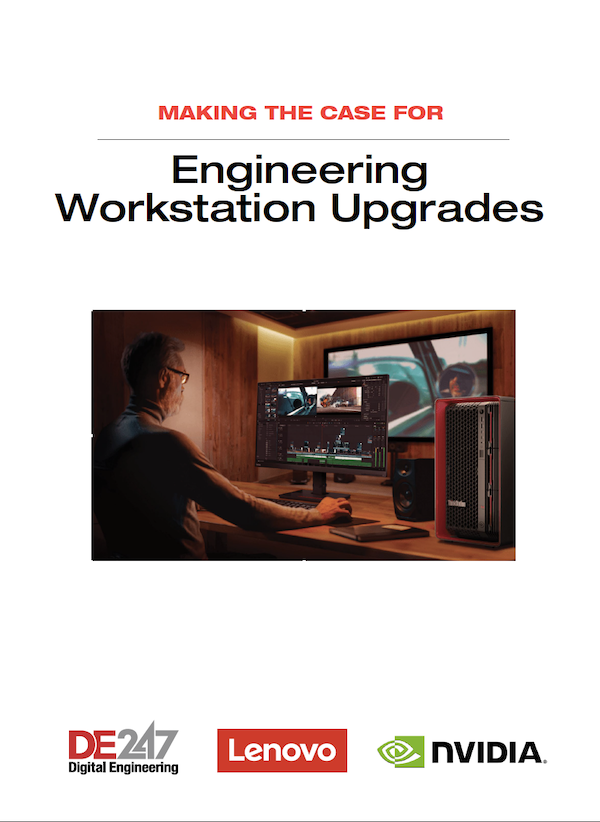Optimize Your Design Investments
Latest News
August 1, 2010
By Wes Shimanek, Intel
 |
Optimizing engineering assets can play a key role in gaining competitive advantages, growing revenues, increasing profits, and maximizing customer loyalty. It can reduce product development time and cost, improve quality, and can move a company from delivering an adequate product into the realm of delivering an optimal product.
Let’s look at three potential areas of asset optimization.
Optimize Your Engineer’s Talents
An engineer is a highly skilled worker who is paid to innovate and create a product that meets your customers’ needs. If you give this professional the right tools, you may be able to supercharge their talents to let them quickly play more “what ifs.” They will still meet product deadlines, but they will likely do it with a product that is closer to optimal.
The power of “what if” enables an engineer to design, test, simulate, and redefine an idea before an investment is made in the first physical prototype. “What if” helps you reduce cost, without sacrificing quality or missing time-to-market demands.
If you are not contemplating using tools that give engineers an opportunity to play “what if,” you may unknowingly be underutilizing your most prized asset. Why not give them the tools to do it faster?
Optimize the Engineer’s Workstation
Many CAD applications, such as CATIA, Autodesk Inventor, SolidWorks, ProE, Siemens PLM NX and others, are single-threaded applications. That means many of today’s workstations with one or two Intel Xeon 5600 series processors may be underutilized. Why not buy down and reduce your investment?
You could, but doing so would remove any opportunity to incorporate modern workflows that provide your engineers an opportunity to play “what if.” You will miss the chance to leverage software advancements being pursued by many CAD vendors that are combining design and simulation into software suites aimed at helping engineers play more “what ifs.” Worse yet, you may be protracting your product development time and cost.
Albert Einstein once said, “The definition of insanity is doing the same thing over and over again and expecting different results.” Einstein makes an interesting point: If you do not look for opportunities to change, you will be stuck in the past. Software and hardware technologies have changed considerably in the last few years. You can now design and simulate right at the workstation. You can create modern workflows that maximize today’s workstations and give engineers the opportunity to create optimal products in the same time they would have designed and tested adequate products.
Optimize Your HPC Investment
OK, you say already have a cluster that is used to do simulation. That is fantastic.
Now imagine how much more productive that investment will be when you remove all the small and medium jobs from its queue. Imagine how much faster you will get your large jobs returned when all the available cycles can be applied to the enormous jobs.
Today’s workstations from vendors such as Boxx, Dell, HP, and Lenovo are amazing. They pack the performance of high performance computers (HPCs) with amazing visualization technologies from companies such as ATI and NVIDIA.
When engineers are using large, but remote HPC resources, modern workstations give them the ability to rapidly test new ideas before submitting larger jobs to the remote center.
What’s Next
Ask yourself if the power of “what if” can make a difference. If so:
- Prioritize technology investments to support an evaluation of “what if.”
- Get your IT organization to break the mold and give you an opportunity to test new ideas.
- Evaluate or measure the return of incorporating “what if” software and hardware technology investments.
Ask if your organization can:
- Increase its efficiency and obtain better results with the same resources, or obtain the same results with less by adopting “what if” product development strategies.
- Increase its effectiveness by increasing the quality or quantity of the desired outcome by adopting “what if” product development strategies.
- Use workstation-based “what if” product development strategies to provide a means to eliminate or reduce an opportunity for an otherwise unfeasible activity, or undesirable event.
If you would like to learn more about “what if” product development strategies or consider a pilot, please reach out to your workstation vendor and have them contact me.
Wes Shimanek is Workstation Product Manager, Intel Corporation. Send e-mail about this commentary to [email protected].
Subscribe to our FREE magazine, FREE email newsletters or both!
Latest News
About the Author
DE’s editors contribute news and new product announcements to Digital Engineering.
Press releases may be sent to them via [email protected].






